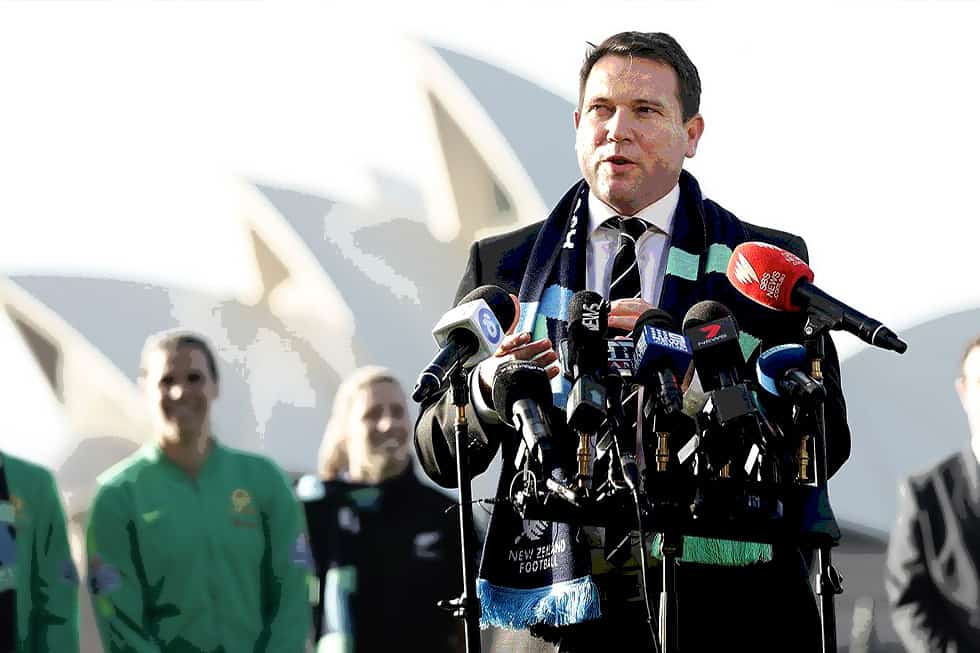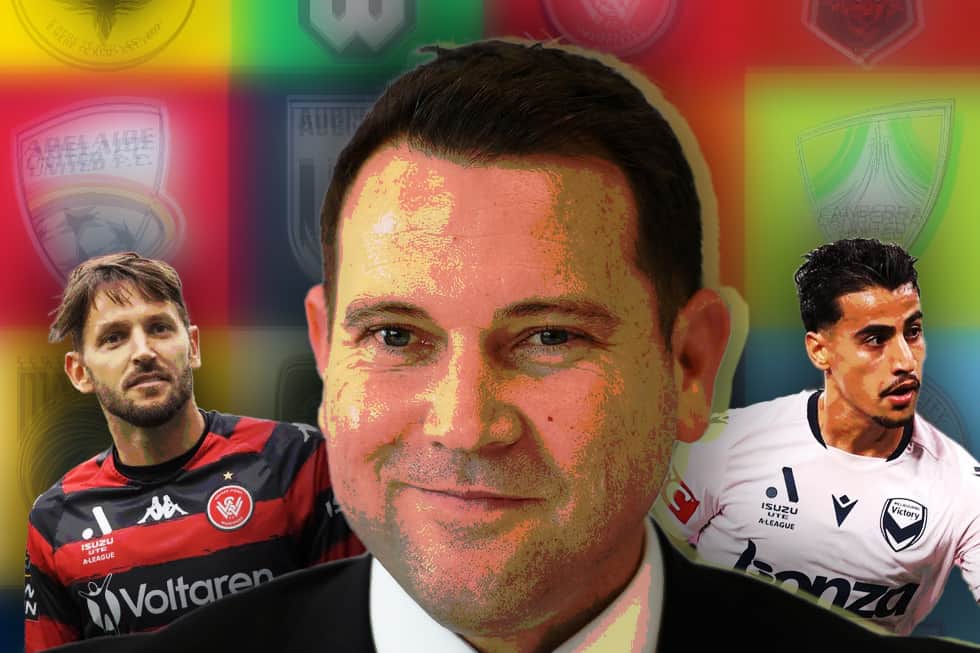It‘s been reported that the A-League is considering implementing a transfer fee system. We explore what we know and how this could impact football in Australia.
It’s often been a criticism levelled at the A-League that players on short-term contracts move freely from club to club without a fee paid for their services. This free agent merry-go-round often occurring in the A-League is a far cry from European football’s standard procedures.
Take Liam Reddy for example. The retired goalkeeper completed a transfer from one A-League club to another five times throughout his career. How much did these transfers cost? Nothing.
Not a single fee was paid from one club to another to acquire Reddy. How can that be fair to the clubs losing an asset like Reddy? Truthfully, it’s not.
In theory, the A-League’s ban on transfers between A-League clubs was imposed to stop the larger, richer sides, like Sydney FC, Melbourne Victory and the City Football Group-backed Melbourne City, stockpiling all the best Australian talent.
In reality, this has happened anyway, with the smaller clubs receiving no remuneration for their loss of talent.
Melbourne City, for example, currently boasts Steven Ugarkovic and Andrew Nabbout, signed from Wellington Phoenix and Melbourne Victory, respectively, for nothing in recent seasons.
Cross-town rivals, Melbourne Victory, have a side featuring Daniel Arzani, Conor Chapman, Stefan Nigro, Chris Ikonomidis, Bruno Fornaroli and Jason Geria. All signed for nothing from A-League clubs.
As the saying goes: If it ain’t broken, don’t fix it. Evidently, the A-League transfer system is broken. It appears appropriate steps are finally being taken to fix it.
What we know about a potential A-League’s transfer system reforms
Check us out on socials, @onlysportsanz: Instagram | Twitter | Tik Tok
What do they look like?
Football Australia CEO, James Johnson, told Fox Sports News he believes the time is right for Australian football to introduce a transfer system between A-League clubs.
In his view, ‘the Australian market for many, many years had a lot of transfer fee leakage.’ Johnson believes the revenue of Australian clubs could double, should these reforms be enacted.
‘I think a reasonable amount of annual revenue is between $20-to-$25 million per year,’ he said. Such figures would see Australian clubs in line with those in Asian heavyweight football leagues, like Japan and South Korea.
Essentially, Johnson’s pushing for A-League clubs to pay other A-League clubs for their talent. For example, when Melbourne Victory signed Bruno Fornaroli from Perth Glory in 2023, they’d need to have paid a transfer fee. At the time, Fornaroli was valued at just shy of $1 million, according to TransferMarkt.
These reforms would have benefits. However, before we get ahead of ourselves, any reforms require the approval of the Australia Professional Leagues (APL) and the Players Association.

Wait, Australian football clubs don’t make any transfer income?
Of course, Australian football clubs make transfer revenue. However, this is only through overseas player sales. In the 2023-24 season, A-League clubs reported around $10.8 million in player sales. That’s without including Nestory Irankunda’s move to Bayern Munich, reportedly costing the Bavarian outfit around $6 million.
This is up from the $2.5 million generated from A-League overseas player sales in the 2018-19 season, highlighting how Australia’s improved talent production has improved the rewards reaped for this production.
In fact, of the 10 most expensive transfer fees paid for an A-League player, half have been forked out since the 2020-21 season.
Belgian outfit Sint-Truiden paid approximately $1.98 million for Liberato Cacace, Jordan Bos moved to Westerlo for $2.15 million, Aston Villa acquired Joe Gauci for around $2.5 million, Marco Tilio cost Celtic nearly $3 million and Bayern Munich signed Nestory Irankunda for around $6 million.

Check us out on socials, @onlysportsanz: Instagram | Twitter | Tik Tok
How could this benefit Australian football?
CLUBS
The obvious answer here is money. Certain A-League clubs – Central Coast Mariners, Adelaide United and Melbourne City – have nailed their talent production lines. Subsequently, they’ve gained large revenue streams from overseas clubs buying their young stars in recent seasons.
For the rest of the league, this is not the case. However, a domestic transfer system could close the income gap between clubs exporting to Europe, and those who aren’t.
Take Western Sydney Wanderers for example. In the 2023-24 season, they lost four players to A-League clubs: Alessandro Lopane and Terry Antonis (Melbourne City), Adama Traore (Melbourne Victory) and Daniel Wilmering (Newcastle Jets).
Neither of the four commanded a fee. Neither of the four would’ve commanded a fee in the range of Irankunda’s to Bayern or Marco Tilio’s to Celtic, but under the reformed system they’d have commanded a fee. No matter how small, income is still income.
A domestic transfer system needs to happen now. https://t.co/gLOGFapmMp
— AussieScout (@scout_aussie) March 12, 2024
Of course, the Wanderers benefitted from the current system. They acquired three players from A-League clubs; Josh Brilliante, Dylan Pieiras and Jack Clisby, without parting with a fee.
The current system goes both ways. But where the Wanderers wouldn’t have benefitted, Melbourne Victory, Western United and Perth Glory would have.
Clubs may not be making millions from transfers with other A-League clubs. But, in a league with as much financial uncertainty as the A-League, where attendances are ever-dwindling and TV deals are lacklustre, all revenue is appreciated.
This new system might limit the spending capacity of certain A-League sides, meaning their ability to sign proven players from other clubs would take a hit, likely impacting their performance.
However, because it’s cheaper to develop players than to sign them, this would create an environment that incentivises player development.
Unable to afford fees to sign players from other A-League clubs, teams throughout the competition may turn to developing players, offering them first-team minutes with the hope they’re signed from Europe or Asia for a considerable fee.
Johnson alluded to as much, stating ‘if clubs in Australia are going to give players more match minutes during A-League matches, they’re going to see some returns when it comes to transfer revenue.’
With a National Second Division not far away in Australia, this transfer system could also have wide-reaching effects throughout the nation’s footballing pyramid.
Should these reforms make it mandatory for A-League clubs to pay fees to any National Premier League or state league clubs they sign talent from, then the financial viability of clubs entering the NSD.
Again, even if these fees are minute, they’re better than nothing.
Check us out on socials, @onlysportsanz: Instagram | Twitter | Tik Tok
PLAYERS
As mentioned above, increased overseas interest in Australian talent means there is an incentive for A-League clubs to develop players. Not all of these players will end up in Europe, or Asia, or America. Regardless, they’ll be better for their club’s emphasis on player development.
For every Nestory Irankunda, Jordan Bos and Sam Silvera there is a Steven Ugarkovic and Bruno Fornaroli, fantastic A-League players trading one club for another, and Josh Nisbet, who’s reportedly set to trade the Mariners for Melbourne City.
These guys may not be the big-name marquees who attract a casual fan to the game week in, week out. They are, however, vital cogs in the A-League machine, guys whose overall quality improves the league.
Players like Nisbet, in particular, who is loved by Central Coast Mariner fans, hold a special affinity within their respective fanbases. Regardless of whether it’s the A-League or the Premier League, fans enjoy nothing more than watching homegrown talents flourish for their side
A perfect example of this is Rhyan Grant. The right-back has become a cult hero at Sydney FC in the last decade. The 21-cap Socceroo is adored by his club and an exceptional right back on his day.
Incentivising clubs to develop more means more Irankundas, but also more Nisbets. If Australian football is to survive and thrive, it needs a balance of them.
From a player’s perspective, it’s hard to imagine a world where these reforms don’t result in clubs tying their players down to longer contracts, as is common across the footballing world.
This is because, typically, clubs trying to sign a player in the first year of a three-year deal will be asked for a higher fee than if they were trying to sign that same player in the second year of a three-year deal.





